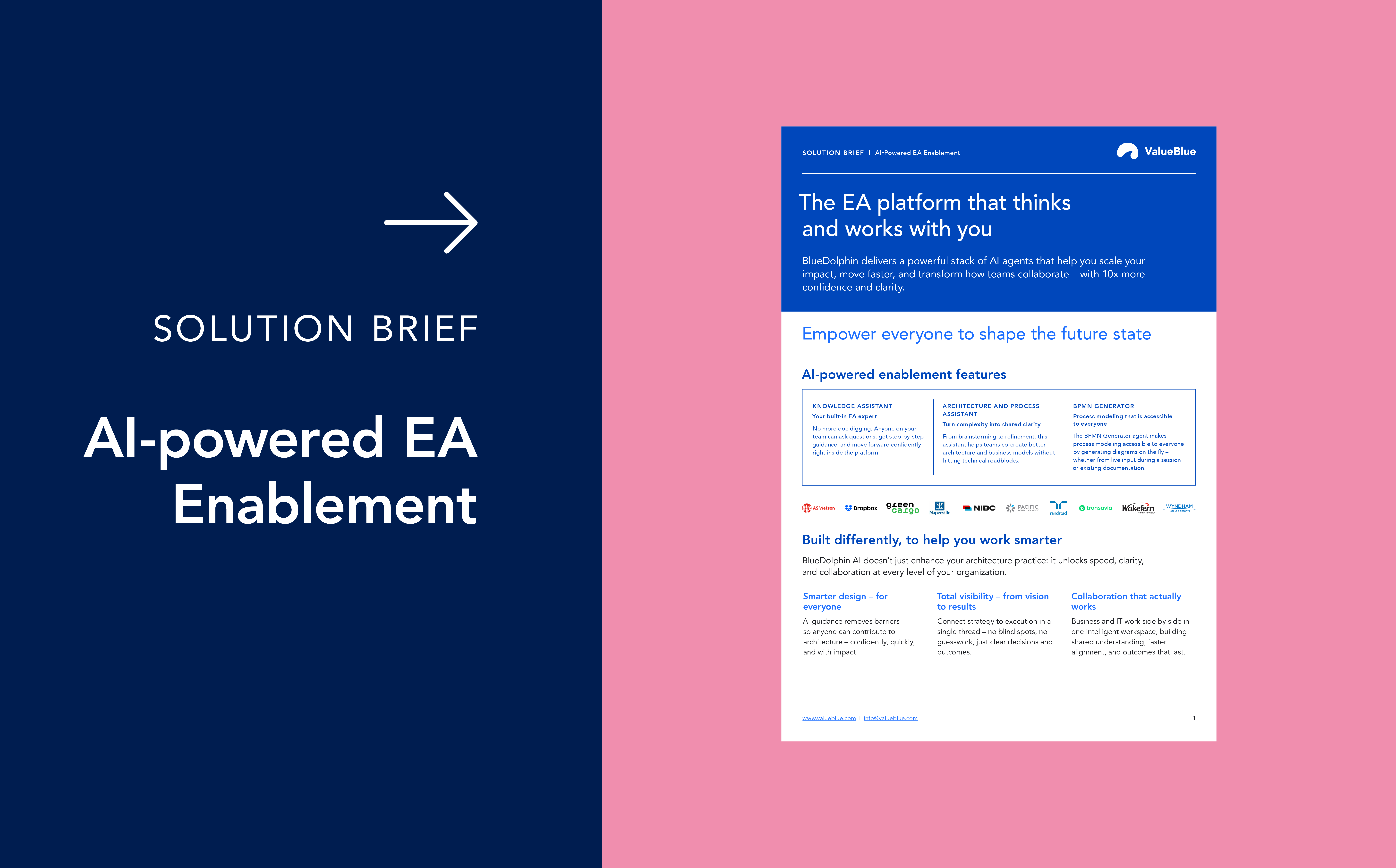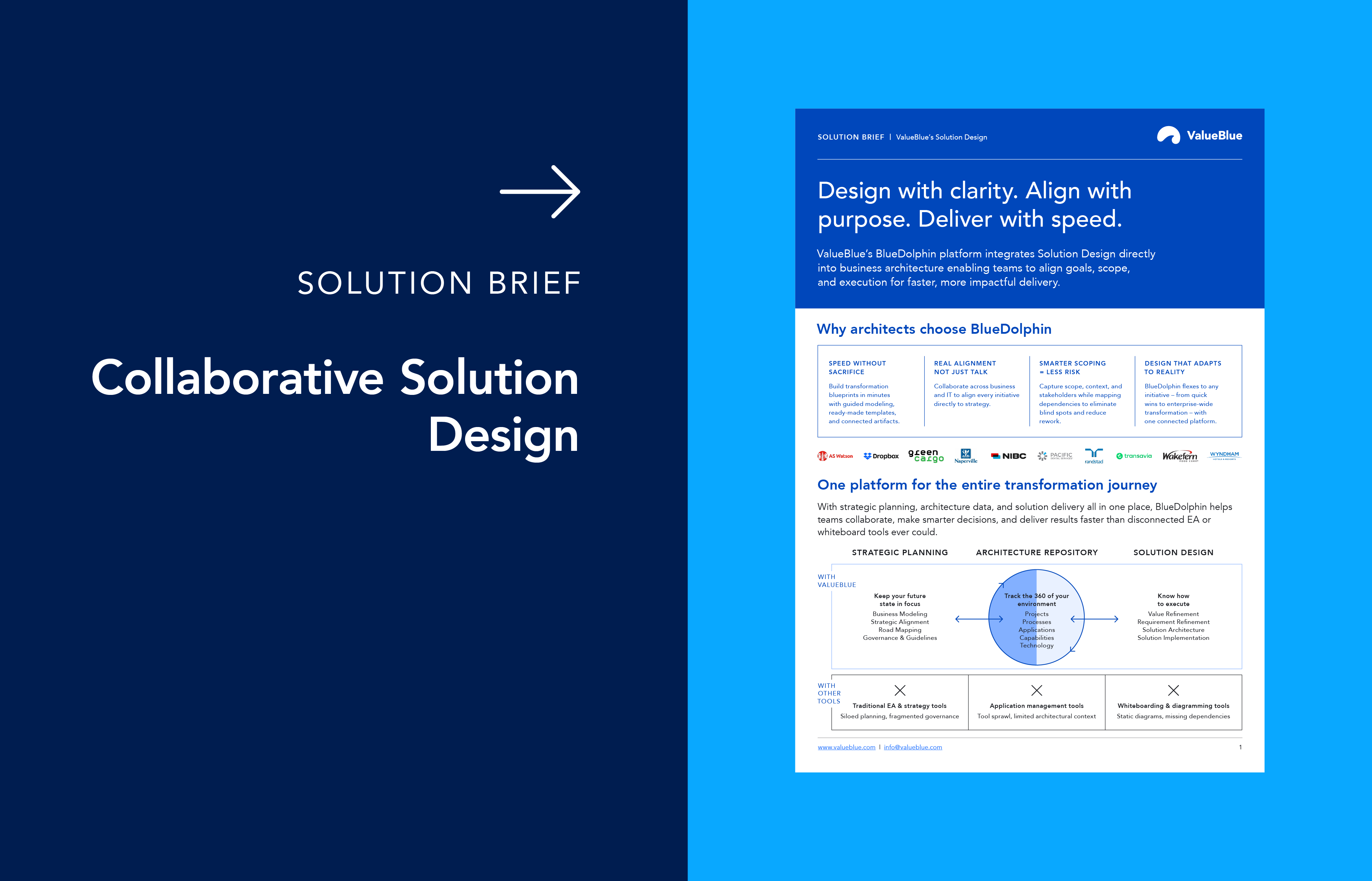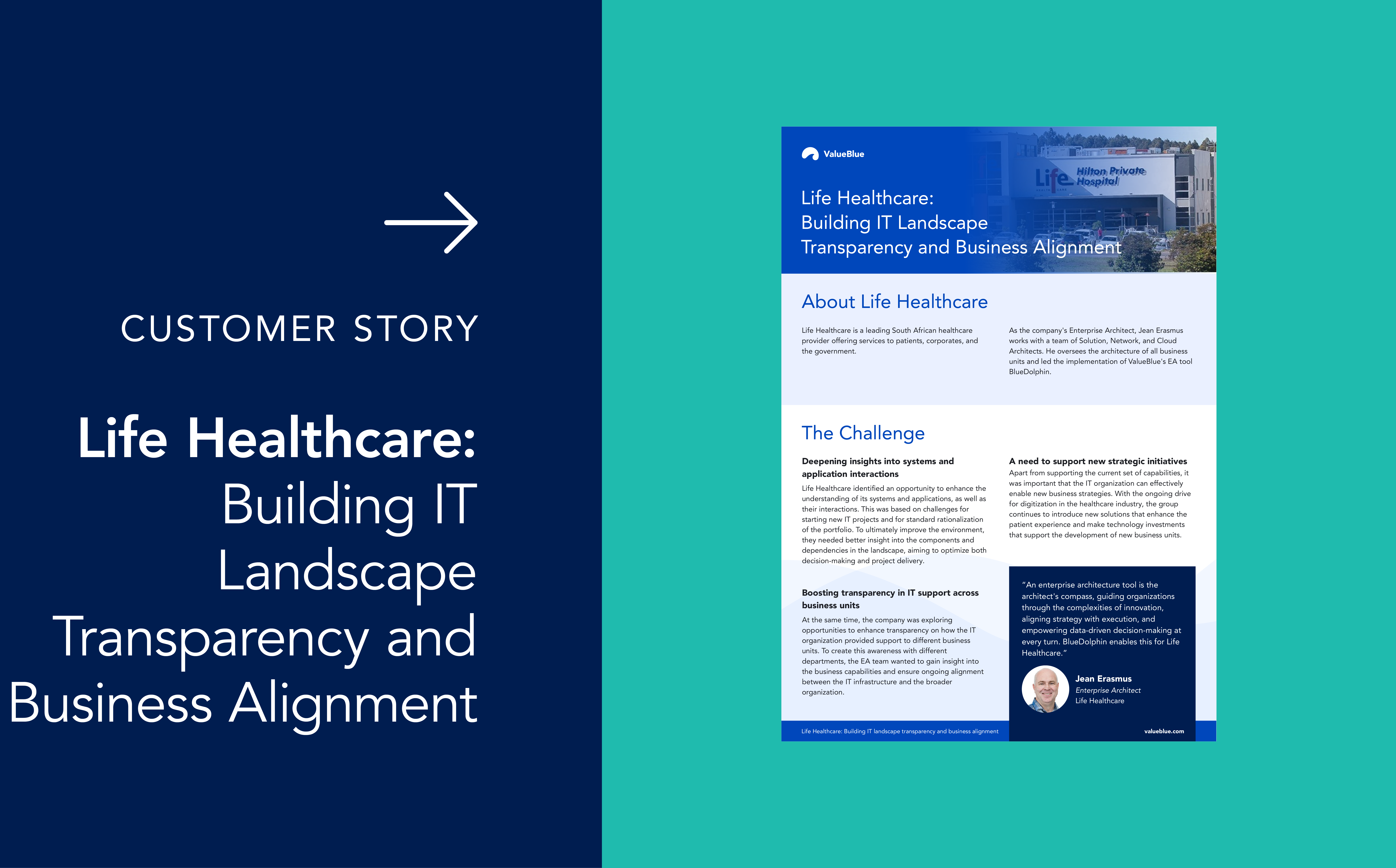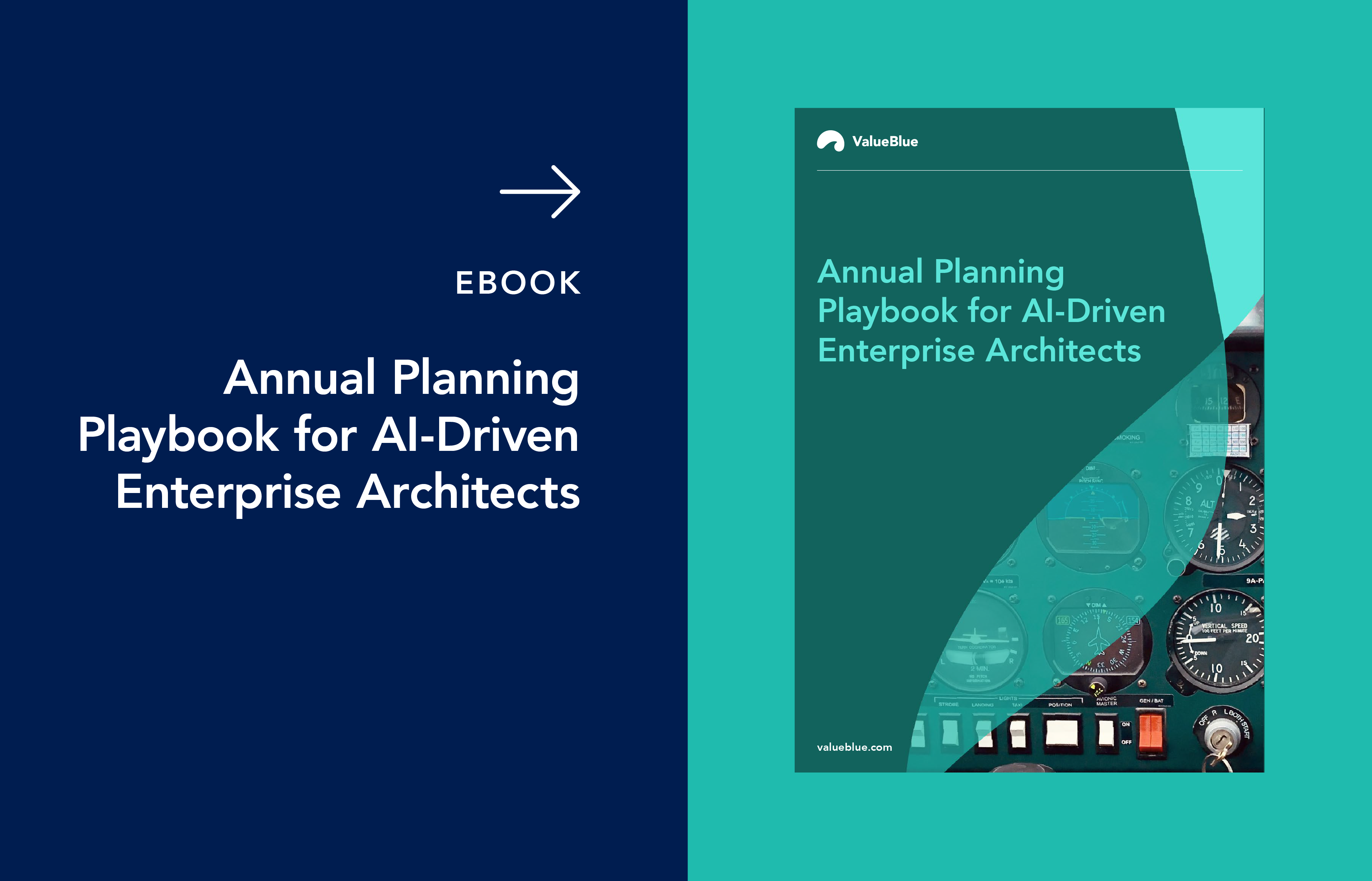Integrating Cloud with Enterprise Architecture: Best Practices
As organizations adopt cloud technologies to become more agile, scalable, and cost-efficient, IT leaders must ensure these efforts align with overall business goals. Enterprise Architecture (EA) provides the strategic foundation for this alignment, enabling organizations to plan, govern, and execute cloud initiatives effectively. When executed effectively, the convergence of EA with cloud computing delivers operational resilience, innovation, and a sustainable competitive advantage.
In this article, we look at some best practices for integrating cloud with the help of Enterprise Architecture.
Why use Enterprise Architecture during cloud adoption?
Cloud computing offers organizations access to scalable resources, cost optimization, and the ability to innovate rapidly. However, without the strategic oversight of Enterprise Architecture, cloud initiatives can quickly become fragmented, leading to misaligned investments, security vulnerabilities, and compliance risks.
Enterprise Architecture provides the blueprint for aligning technology investments with business goals. It ensures that every cloud decision supports the organization’s mission, values, and long-term objectives. This synergy enables organizations to:
- Achieve cost efficiency by optimizing infrastructure and application portfolios.
- Enhance agility and scalability to respond quickly to market changes.
- Strengthen security and compliance through standardized governance.
- Ensure operational resilience with robust disaster recovery and business continuity plans.
Key challenges in cloud integration
While EA provides critical guidance, integrating cloud solutions into the IT landscape presents unique challenges:
- Legacy integration: Moving from on-site systems to the cloud often involves complicated connections with older applications and data.
- Security and compliance: Ensuring data protection and regulatory compliance across hybrid or multi-cloud environments is a persistent concern.
- Governance complexity: Managing cloud resources, costs, and vendor relationships demands new governance frameworks and policies.
- Cultural and organizational change: Successful integration requires collaboration across IT, business units, and external partners, often necessitating changes in skills, processes, and mindset.
Best practices for cloud adoption with Enterprise Architecture
To overcome these challenges and maximize the value of cloud adoption, IT leaders should embrace the following best practices:
1. Align cloud initiatives with business goals
Before starting the migration, clearly define the business objectives driving cloud adoption, such as cost reduction, improved agility, enhanced security, or digital transformation. Use EA frameworks to ensure every cloud investment directly supports these goals.
2. Conduct a thorough readiness assessment
Evaluate your current IT landscape, including infrastructure, applications, and processes. Identify gaps between the current state and the desired future state and engage stakeholders across the organization to assess readiness and set priorities.
3. Develop a cloud strategy and roadmap
- Strategic planning: Create a cloud strategy that outlines objectives, timelines, and key milestones. Perform a cost-benefit analysis to understand financial implications and define risk mitigation strategies.
- Phased implementation: Begin with pilot projects to test cloud solutions, then adopt a phased approach for broader migration. This minimizes disruption and enables continuous learning and adjustment.
4. Establish clear governance and standards
Implement governance structures to oversee cloud adoption, including security, compliance, and resource management policies. Standardize processes for selecting and implementing cloud solutions to ensure interoperability and reduce complexity.
5. Foster stakeholder engagement and collaboration
Active collaboration between IT, business leaders, and external partners is essential. Engage stakeholders early, maintain transparent communication, and ensure alignment throughout the integration process.
6. Prioritize security and compliance
Build a comprehensive security framework that includes privacy features, access controls, and continuous threat monitoring. Ensure all cloud services comply with relevant regulations and industry standards, conducting regular audits and risk assessments.
7. Embrace continuous improvement and agility
Technology and business requirements evolve rapidly. Adopt a culture of continuous improvement, regularly reassessing your architecture and cloud deployments to incorporate emerging technologies and best practices.
Frameworks and methodologies supporting cloud integration
Adopting proven Enterprise Architecture frameworks streamlines cloud migration and reduces risk:
- TOGAF (The Open Group Architecture Framework): Provides a comprehensive methodology for designing, planning, and governing Enterprise Architecture, ensuring alignment between IT and business strategies.
- Zachman Framework: Offers a structured approach to analyzing and organizing Enterprise Architecture, facilitating communication among stakeholders and ensuring all perspectives are addressed.
These frameworks support the creation of detailed roadmaps, governance models, and performance metrics, ensuring that cloud adoption is both strategic and sustainable.
The role of Enterprise Architecture solutions
Modern Enterprise Architecture platforms are evolving to support the complexity of cloud integration. They offer:
- Centralized visibility: Dashboards and analytics provide a holistic view of the IT landscape, enabling data-driven decision-making.
- Automated workflows: Streamlined processes for application portfolio management, compliance tracking, and change management reduce manual effort and risk.
- Collaboration tools: Built-in features facilitate cross-functional communication and stakeholder engagement, accelerating consensus and execution.
- Modular, agile design: Support for incremental improvements, and modular architecture allows organizations to adapt quickly to new technologies and business needs.
By leveraging such capabilities, organizations can transform cloud migration from a risky, ad hoc process into a value-driven, well-governed journey.
Achieving business agility and innovation
Using Enterprise Architecture framework for cloud computing integration significantly improves agility, cost efficiency, and innovation. For example, businesses in the retail sector can respond more effectively to market shifts. Meanwhile, healthcare organizations can use it to simplify electronic health record (EHR) migrations and improve patient care.
Key outcomes include:
- Faster time-to-market: Rapid deployment and testing of new applications.
- Reduced IT costs: Pay-as-you-go models and rightsizing resources eliminate unnecessary expenses.
- Enhanced security: Centralized access control and built-in redundancy ensure data protection and business continuity.
- Scalable innovation: Seamless integration with AI, analytics, and other emerging technologies supports ongoing digital transformation.
Build a resilient, future-ready enterprise
Leveraging Enterprise Architecture to guide cloud adoption is a strategic imperative for IT leaders seeking to drive digital transformation. By aligning cloud initiatives with business goals, establishing robust governance, and leveraging advanced EA solutions, organizations can navigate the complexities of cloud adoption and unlock sustainable value.
Ready to see how a collaborative, data-driven approach cloud integration with Enterprise Architecture can accelerate your transformation? Book a personalized demo today.





